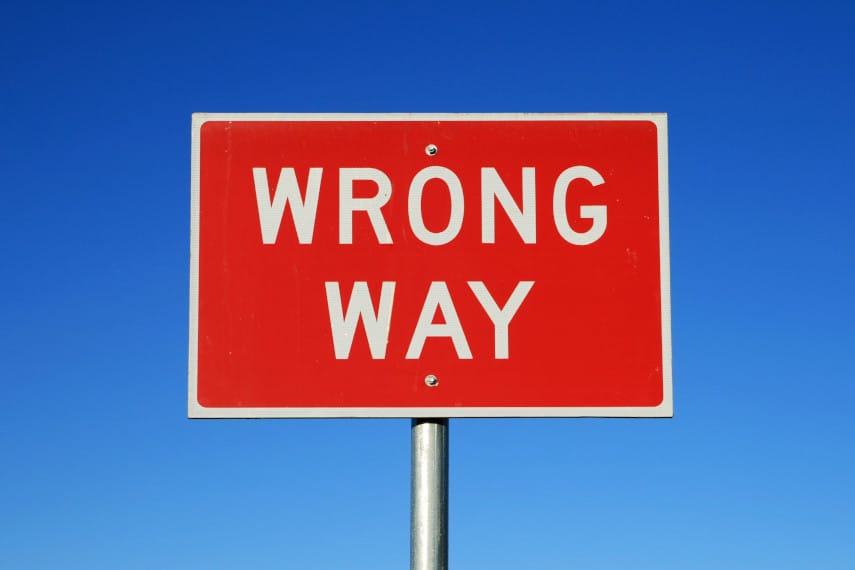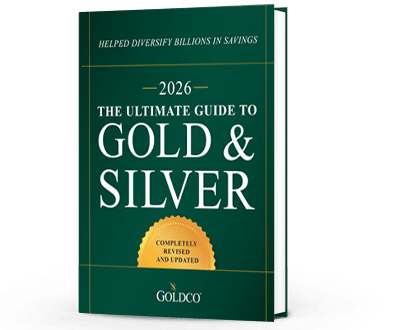6 Indicators of a Potential Recession
It seems that in the media today there are more and more mentions of the dreaded R-word: recession With growing economic uncertainty, the threat of potential recession seems to be growing as...
Economy

In a recent NBC News poll, 74% of Americans think that the country is on the wrong track, and only 21% think the country is heading in the right direction. That’s a sobering statistic, and one that brings up the question of how exactly the country could turn things around and start heading in the right direction.
There’s no denying that Americans are having a tough time right now. With high housing prices, expensive gas, and rising food costs, household budgets are stretched thin. And with no real clear direction about which way things will go in the future, it’s no wonder Americans are pessimistic about the direction the country is headed.
While much of the media continues to try to play cheerleader and pretend that the economy is alright, Americans aren’t buying it, and for good reason. Here are four reasons the US is headed in the wrong direction.
Obviously high inflation is everyone’s foremost concern. If you keep a budget or keep track of the prices you’ve paid for goods and services, you’re acutely aware of how much more expensive things are today than they were a year ago.
While headline goods like gas, houses, and cars have increased in price tremendously, prices of some staples like canned goods have in some cases increased even more. And with continued talk of rising energy costs, lackluster farm production, and continued transportation bottlenecks, it seems as though rising prices are here to stay.
The past few decades were ones of relatively low inflation, lulling Americans into a false sense of confidence that things would continue in that same vein. Even after the massive monetary stimulus to combat the 2008 financial crisis, much of that money didn’t escape into the broader economy and start boosting prices. So perhaps it’s no wonder that many people expected the same lack of inflation after the Fed’s 2020 monetary interventions.
But that was not to be the case this time around. The Fed decided not to try to soak up the monetary liquidity it was creating, and the trillions of dollars it pushed into the financial system began to circulate, eventually driving up prices. How long that’s going to happen is anyone’s guess. Even though the Fed has begun its quantitative tightening, it could still be months for that to have any effect on lowering prices.
In a worst case scenario, we could end up with a situation like the 1970s, with persistent high inflation for years and years. And that’s definitely not where anyone wants the country to be.
Labor markets have been among those least able to adjust to the new normal of high prices. Companies in numerous industries have complained about the inability to find workers.
At the lower end of the labor market, much of that is due to the fact that companies just aren’t willing to pay their employees enough to make it worth their time. Given how expensive rent, food, and healthcare are today, showing up to flip burgers for $12 an hour just doesn’t make economic sense, especially when there are generous government benefits out there for those out of work.
The trades aren’t much better, with numerous industries bemoaning the fact that they can’t find people to work. So many young people have grown up thinking that they have to get to college to get ahead that they think manual labor is beneath them. And so skilled industries are looking for welders, electricians, and HVAC repairmen, often to no avail.
The flip side of this is that many companies are now starting to have to lay off workers. Many of these are at tech companies, who are having to cut costs as consumer spending is slowing. Others are at manufacturing companies, who are dealing with both reduced consumer demand as well as idle workers as supply chain problems continue. And big box stores may have to start laying off employees too, as consumers are all tapped out now that stimulus money has come to an end.
Over two years after the lockdowns ended, supply chains still haven’t recovered. Some areas or industries you’ll see a glut of goods, while in other areas you’ll see shortages. Stimulus spending boosted consumer demand artificially, which caused many industries to overproduce, and now we’re dealing with the consequences, as heightened inventory may end up leading to price cuts.
There are still strategic shortages of certain electronic parts in some industries, and shipping continues to be a wild card. In short, we’re nowhere close to returning to normal. But who knows what the new normal will look like?
Will businesses try to return to a just in time inventory system? Or have they been chastened by events of the past two years, so that they’ll look to hold more inventory on hand to weather supply chain issues? These are questions that are tough to answer, but with continued difficulty facing supply chains there’s no doubt that it will take some time for supply chains to readjust.
By far the most pressing problem facing the US today is the Federal Reserve System. We’re seeing now the results of trillions of dollars of monetary intervention, and it isn’t pleasant. The Fed not only didn’t expect inflation, it denied that inflation was happening.
Then once it became apparent that inflation was a thing, the Fed tried to paint it as transitory. And now that inflation remains high, the Fed continues to say that it will combat inflation and not stop until inflation once again reaches the Fed’s 2% target. Does anybody really believe that?
The reality is that we’re looking at a Federal Reserve that doesn’t really know what it’s doing. It tries to talk a good game, but at the end of the day it’s just using the one tool it has (monetary policy) and hoping that the effects of that policy are good. We’re placing our trust in unelected bureaucrats to protect the value of the dollars in our wallets, our savings accounts, and our investment accounts.
The Fed’s track record over the past 100+ years has been atrocious. As a steward of the US dollar, the Fed has allowed the dollar to lose 97% of its purchasing power since its inception. And yet we’re supposed to believe that the Fed will somehow get tough on inflation.
The last time the country faced a crisis like this was in the early 1980s. After a decade of stagflation, inflation was still running rampant. It took Paul Volcker to finally put his foot down to bring inflation under control, but at the cost of pushing the economy into recession.
Does Jay Powell have the guts to risk recession in order to bring inflation under control? Or will he bow to inevitable political pressure to try to keep the economy out of recession? It’s hard to say which way Powell will go, but the Fed has made so many bad decisions in recent years that it’s hard to believe that it will suddenly change course and do the right thing.
Millions of Americans see the writing on the wall, and realize that the US isn’t headed in the right direction. And with so much out of their control, they’re doing what they can to maintain what they can control.
When it comes to their wealth, more and more Americans are choosing to protect themselves with gold. Gold has a long history of serving as an inflation hedge and as a safe haven asset during times of turmoil. And there are more choices than ever when it comes to buying gold.
Whether you’re looking to protect retirement savings with a gold IRA, or just looking to buy gold coins to store at home, Goldco has numerous options available to help you protect your wealth with gold. Even if the country is headed in the wrong direction, there’s no reason to allow your finances to do the same. So call Goldco today to learn more about how gold can help you.

